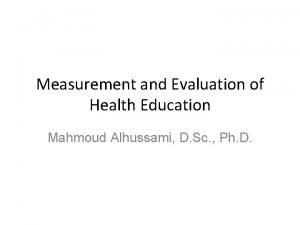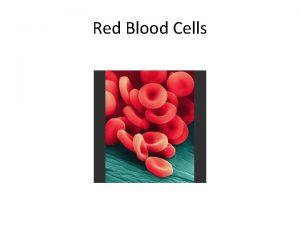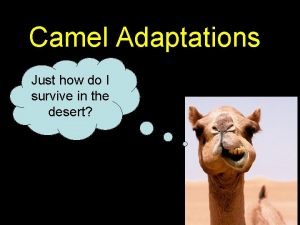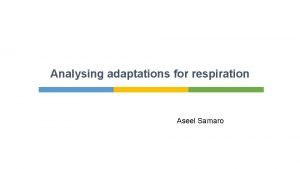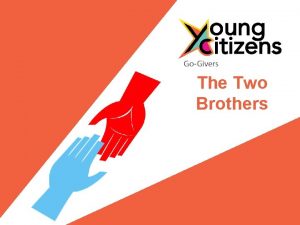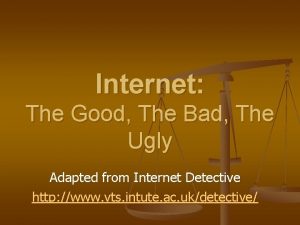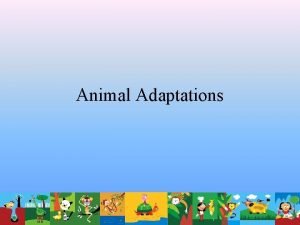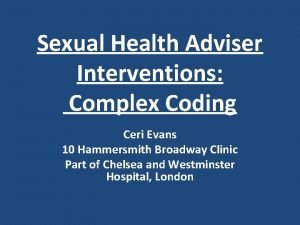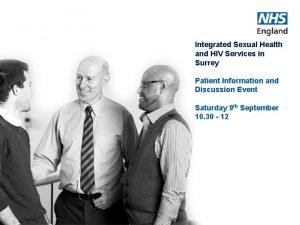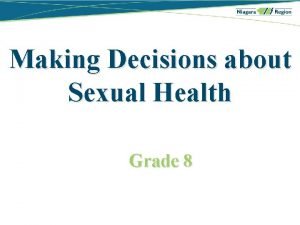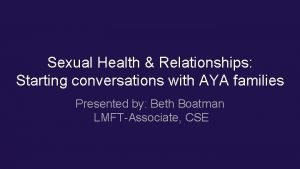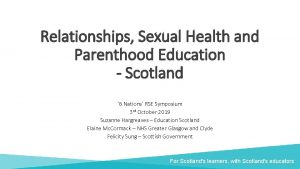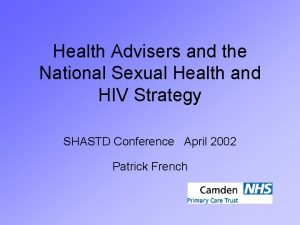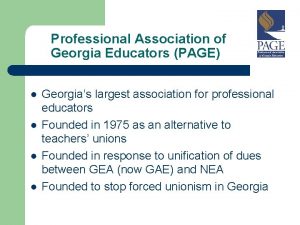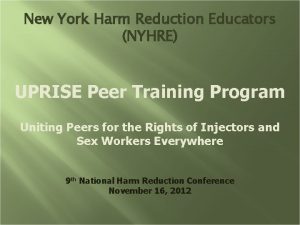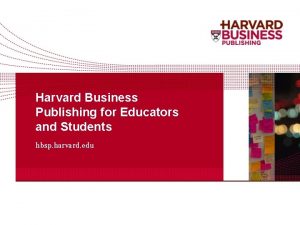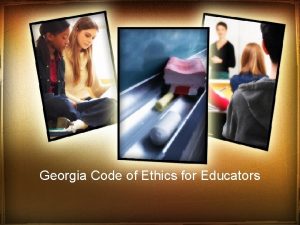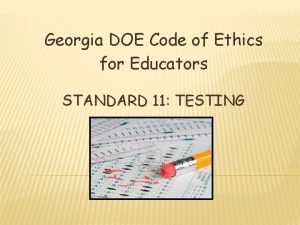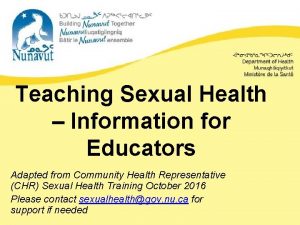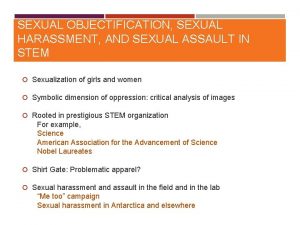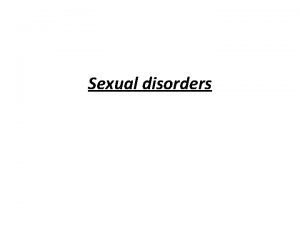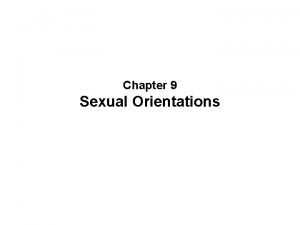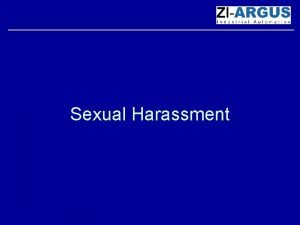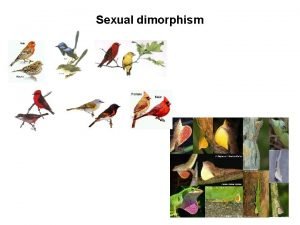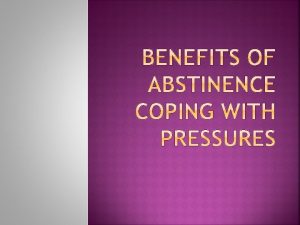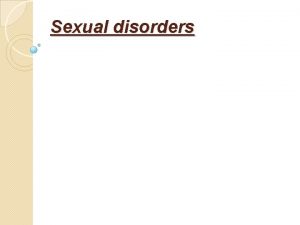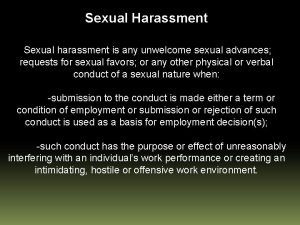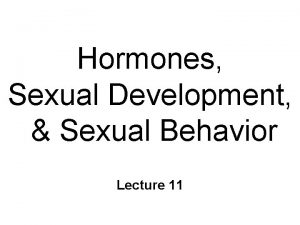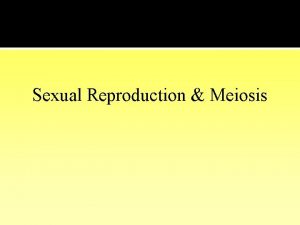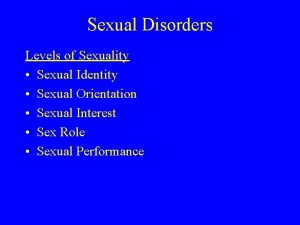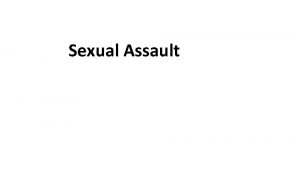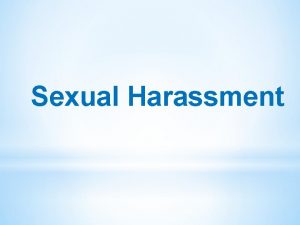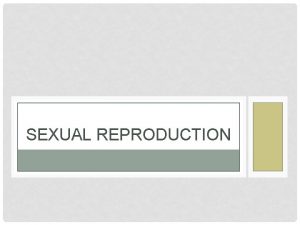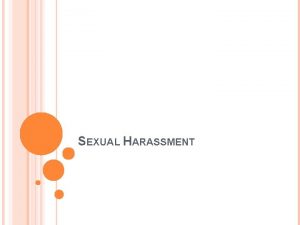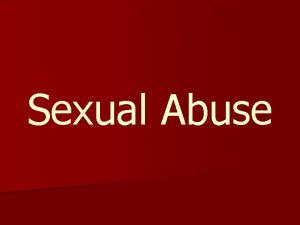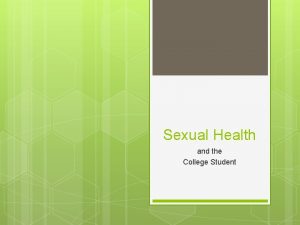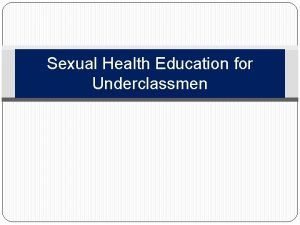Teaching Sexual Health Information for Educators Adapted from

















































- Slides: 49

Teaching Sexual Health – Information for Educators Adapted from Community Health Representative (CHR) Sexual Health Training October 2016 Please contact sexualhealth@gov. nu. ca for support if needed

Content • • Sexual health in Nunavut What is sexual health? Why should we talk about sexual health? Sexuality values Age-appropriate sexual health education Best ways to teach sexual health Tips and tools for teaching sexual health

Sexual Health Program Goal • Help Nunavummiut to have the knowledge, skills, and confidence to make choices about their sexual health.

What do CHRs want to learn? • How to do presentations • How to encourage people to talk with their partners and parents to talk to their kids • How to teach more effectively • What people need to know at different ages • What resources are available – suitable for young people, culturally appropriate • Inuit values about sexual health

What are CHRs worried about in teaching sexual health? • People (parents, principals, Elders, community) disagreeing with the topic being taught • Not answering questions professionally • Not giving the information that people need • Audience asking questions you don’t know the answers to • Intersection between mental health and sexual health • How to start conversations • Saying “oochook” and “ooshook”(penis and vagina in Inuktitut)

Context of SRH in Nunavut • Colonization and historical trauma – effects on parenting, alcohol use, relationships, sexual violence, child sexual abuse, stigma, risky sexual behaviours. • Determinants of SRH – housing, food security, safety and security, education, poverty, health services, gender. • Sexual health educators in Nunavut must be aware of these issues and their impact on the sexual health of Nunavummiut.

Nunavut Sexual Health Statistics Unmet need for contraception in female caregivers of children 12 -47 months in Nunavut Pregnant or trying to get pregnant Using birth control Want to prevent pregnancy, but not using birth control Nunavut Baseline LQAS Survey 2016

Nunavut Sexual Health Statistics Nunavummiut who were sexually abused as children 60% 50% Axis Title 40% Women in Nunavut 30% Men in Nunavut 20% 10% 0% Sexually Abused as Children Inuit Health Survey 2007 -2008

Nunavut Sexual Health Statistics Government of Nunavut Population Health Information Unit 2015

Nunavut Sexual Health Statistics • Most people support healthy sexuality education! – More than 8/10 mums and 9/10 adults • 22/25 communities have condom dispensers up in their communities! – 15/25 have more than one condom dispenser up (Sanikiluaq and Igloolik have 6 and Baker Lake has 8!) Nunavut Baseline LQAS Survey 2016, Sexual Health Program Records

What are the most important sexual health issues in Nunavut? CHRs said: • STIs – especially syphilis • Pregnancy – especially teen and unplanned • Child sexual abuse • Multiple partners • Sexual violence – rape, unwanted touching • Sex for money, housing, food, alcohol, or drugs • Parenting • Lack of sexual health education • Fatherhood – men aren’t sure how to be good Dads

What is sexual health? CHRs said: • Family planning/ birth control • Education • Communication • Confidence/ self-esteem • Decision making • Birth to death/ starts from a young age • Respect – self and others • • Body parts Feelings Trust Knowledge Values Who you’re attracted to Knowing your body Parenting

What is sexual health? Values – what is important to us Relationships Body Image and Self-Esteem – how we feel about ourselves Sexual Health Physical Expression – sex Decision Making Communication – how we talk to others Anatomy and Physiology – body parts Sexual orientation, gender roles, identity

Definition: Sex • Categories that people are assigned at birth based on body parts (male, female) • Sexual activity/ intercourse

Definition: Sexuality/ Sexual Health • How we feel about ourselves (self-esteem) • How we think we should behave as males or females (gender expression) • Who we love (sexual orientation) • How we think about sex – values, attitudes, desires • Overall well-being – not just STIs and unplanned pregnancy!

In other words… • Sex is an act or a body part • Sexuality and sexual health are about being human and general well-being. • We teach sexuality education and sexual health education!

Why do we need to start talking about sexuality when children are young? • Because sexuality is about communication, relationships, feelings, and self-esteem. • When we talk about communication, relationships, feelings, and self-esteem at a young age, children learn how to behave as adults.

Thoughts-Feelings-Behaviour Triangle Feelings Thoughts Behaviours

Thoughts-Feelings-Behaviour Triangle I’m ugly and stupid. No one will ever love me. I don’t deserve a good relationship. I’ll stay in this relationship, even though he/ she hurts me and won’t agree to use a condom, because it’s what I deserve and the best I can get.

Thoughts-Feelings-Behaviour Triangle Boys are strong. Strength means not crying, and never showing weakness. I can’t cry, I can’t be vulnerable, but I’m hurting. Drinking to numb pain and hurt. Violence, anger, frustration.

Thoughts-Feelings-Behaviour Triangle Sex is dirty and something I’m not supposed to do. The words are shameful and embarrassing. I’m ashamed of the way I feel like I can’t talk to anyone about this. I can’t ask my parents for advice. I can’t talk to my partner about using a condom. I can’t ask a nurse about getting an STI test.

Changing the thoughts What can CHRs and other health educators do? • Talk about the “extras” – self-esteem, body image, communication, relationships, feelings. • From a young age, tell children they are good and smart and deserve good things. • Talk about “sexual health” in all sorts of places – not just sexual health class.

Thoughts-Feelings-Behaviour Triangle I’m smart. I deserve good things. My parent/ teacher/ neighbour told me so. I’m proud of who I am. I’m confident that I can keep myself safe. I want to BE someone! I’m going to ask my partner to use a condom. I’m going to use birth control.

Talking to our children about sexual health can help them: Be safe Be happy Be healthy Have good relationships Feel good about their bodies Have children when they’re ready Wait until they are ready to have sex

Sexuality Values • What we (personally) consider to be good or bad, right or wrong • Every person has different values • Values are often shared in families

Role of Sexuality Educators • Provide information that is factual, up to date, and objective • Help participants understand their own values and beliefs • Provide an opportunity to develop skills • Build confidence • It’s best not to share our own values – because we don’t want participants to feel bad if our values are different from theirs

What are Inuit values and practices around sexuality (past and present)? CHRs said: – Multiple partners sometimes – for building a family or for survival – Respect for yourself, respect for others – Don’t jump to conclusions – learn more – No discrimination – Don’t confuse respect with knowledge – Have children when you can provide for a family – Have children when you’re ready to be a teacher – Gender roles start very young – hunting/ sewing – Arranged marriages – what is good for the community?

Sexuality Values • Please watch the video “Two Soft Things, Two Hard Things” (available through your local CHR, or by contacting sexualhealth@gov. nu. ca) • As you’re watching the video, think about your personal values about sexuality – What do you think about lesbian, gay, and transgender people? – Do you think there are lesbian, gay, or transgender people in your community? – How do you think it might feel to be lesbian, gay, or transgender in Nunavut? – What can you say or do to show in your community and as you are teaching to respect lesbian, gay, or transgender people?

Children and youth need different information at different ages

Ages 0 -2 • Name body parts – penis, vagina, bum, breasts

Ages 2 -7 • Public and private parts and activities. • Who can touch them, when. Be specific! • Safe and unsafe touch. Tell them to tell you, that you won’t be mad, and it’s not their fault. • Recognize and name feelings. • Answer questions simply.

Ages 7 -12 • How babies are made • Family values and expectations • Build self-esteem • Puberty (age 8 -9) • Sexually transmitted infections and birth control (ages 10 -12)

Ages 13 -18 • • Start conversations More detail - STIs and birth control Healthy and unhealthy relationships Decision making – be specific! Build self-esteem Promote safety Build skills, including communication

Our role as sexuality educators Build our participants’ • Knowledge • Skills • Confidence How can we do this?

Best Ways to Teach CHRs said: • Find out what they already know • Make them feel good about themselves – recognize success! • Make it relevant to their life • Focus on good things – not just fear • Humour – get the giggles out • Drama/ Role Play • Telling stories • Yell out words to get comfortable saying them • Arts and crafts • Songs • Radio and TV script writing • • • Videos Activities and games Debates Expert groups – have them teach themselves! Storytelling Hands-on Pictures Guest speakers Field trips Question box Ask questions to check participant’s understanding

• • Tips for educators teaching sexual health Be honest, open, and welcoming Keep your sense of humour Don’t worry if the conversation isn’t perfect Use TV shows, music, movies, the news, and real life to start a conversation.

“People won’t remember what you said or what you did. They will remember how you made them feel. ”

Trauma-Informed Teaching • Sexual health education may feel unsafe for individuals who have experienced sexual violence. • Suggested Practices: – Create a safe space for participants to leave the room or not participate if necessary – Ask a nurse or mental health consultant to attend your session and provide support – Recognize that sexual activity and condom use are not always choices. There alternative harm reduction strategies for these situations, including regular STI testing. – Talk about respect and confidentiality at the beginning of each session. – See “Child Sexual Abuse - Information for Educators” for more information on reacting to disclosures of abuse (www. irespectmyself. ca)

Consider… • Asking a respected Elder to come in and speak about the topic to share traditional knowledge and values. • Meet with the Elder in advance to discuss the topic and ensure appropriate, inclusive, and respectful sharing of knowledge. Consider whethere is any potential for hurt or harm in the information being shared. • After the Elder leaves, have a discussion with your group about similarities and differences between traditional and modern knowledge. Be prepared to answer questions with objective, factual, and up-todate information.

Useful Tools for Teaching Sexual Health • • • Group Agreement/ Ground Rules Parking Lot Icebreaker Activities Question Box Sexual Health Toolkit www. irespectmyself. ca

Tool: Group Agreement/ Ground Rules • All questions are ok, at any time. • If someone tells a personal story inside this room, it stays in this room. • No judgement – we all have our personal values and beliefs. • No putting anyone down.

Tool: Parking Lot • Use the parking lot when you have an off-topic question or comment • It helps you stay on track • Write the off-topic question/ comment on a piece of flip-chart paper or on the board – so that you remember to answer it later

Icebreaker Activities • These activities are used at the beginning of a presentation to “break the ice”, introduce the topic gently, and increase comfort. • Icebreaker activity suggestions can be found here: http: //www. iwtc. org/ideas/10_games. pdf

Tool: Question Box • Provide an opportunity for participants to ask questions anonymously. • You don’t have to know the answer to everything - Don’t answer the questions on the spot! • Go back to the office, prepare your responses, and follow up with the group to share the answers. • Answer the question clearly, objectively, and factually.

Tool: Question Box • There are four types of questions – Request for information – “Am I normal? ” – Values based/ permission seeking – Shock questions (are often requests for information)

Tool: Question Box • You don’t have to answer questions that: – Are not about sexuality – Are about you, your personal life, or your sexuality – Are beyond the grade level – Are about animals – That you can’t read

Tool: Sexual Health Toolkit • Anatomically correct models (penis and vagina) – practice putting on condoms! • Drunk goggles – for students to see how hard it is to put on a condom while drunk • Stuffed “critters” – for an activity to learn about different types of STIs • Pamphlets • CDs, DVDs • 2 USBs – one with an activity guide, videos, and video player; one where Rosie Kagak demonstrates how to use the toolkit • All CHRs have a sexual health toolkit; some schools do

Tool: www. irespectmyself. ca • Information • Resources • Lesson plans

Resources • Further education – Alberta Society for the Promotion of Sexual Health: Online Workshop for Sexual Health Educators http: //www. aspsh. ca/#!online-workshops/c 191 s • Putting sexuality back into Comprehensive Sexuality Education: Making the case for a rights-based, sexpositive approach • Activities for teaching sexual health – Games for teaching adolescent reproductive health http: //www. iwtc. org/ideas/10_games. pdf – Embodied Sex Ed Games http: //www. fluidexchange. org/uploads/1/9/1/4/1914888 3/embodied_games_-_karenbkchan. pdf
 Measurement and evaluation for health educators
Measurement and evaluation for health educators This passage is adapted from jane austen
This passage is adapted from jane austen How are red blood cells adapted
How are red blood cells adapted Adapted with permission from
Adapted with permission from In what ways have the highland maya adapted to modern life?
In what ways have the highland maya adapted to modern life? Adaptations of xerophytes
Adaptations of xerophytes Climate of the chaparral biome
Climate of the chaparral biome How is a camel adapted to life in a desert
How is a camel adapted to life in a desert Sausage shaped organelles
Sausage shaped organelles The two brothers adapted
The two brothers adapted Adapted from the internet
Adapted from the internet Gallant
Gallant How have plants adapted to the rainforest
How have plants adapted to the rainforest Spermopsida plants
Spermopsida plants The outsiders adapted for struggling readers
The outsiders adapted for struggling readers Reaction synoynm
Reaction synoynm How are giraffes long necks adapted to their lifestyle
How are giraffes long necks adapted to their lifestyle Ceri evans
Ceri evans Redhill gum clinic
Redhill gum clinic What is sexual health
What is sexual health Sexual health
Sexual health Amsa sexual health leadership course
Amsa sexual health leadership course Sexual health and relationships education scotland
Sexual health and relationships education scotland Society of sexual health advisers
Society of sexual health advisers Differences between health education and health promotion
Differences between health education and health promotion Missouri educators trust
Missouri educators trust Professional association of georgia educators
Professional association of georgia educators New york harm reduction educators
New york harm reduction educators Hbsp harvard
Hbsp harvard Texas assessment.com
Texas assessment.com Lean innovation educators summit
Lean innovation educators summit Georgia code of ethics for educators
Georgia code of ethics for educators Allied educator primary school
Allied educator primary school Ga ethics exam
Ga ethics exam Earth educators rendezvous
Earth educators rendezvous Purposes of micro teaching
Purposes of micro teaching Fspos vägledning för kontinuitetshantering
Fspos vägledning för kontinuitetshantering Typiska drag för en novell
Typiska drag för en novell Tack för att ni lyssnade bild
Tack för att ni lyssnade bild Ekologiskt fotavtryck
Ekologiskt fotavtryck Varför kallas perioden 1918-1939 för mellankrigstiden?
Varför kallas perioden 1918-1939 för mellankrigstiden? En lathund för arbete med kontinuitetshantering
En lathund för arbete med kontinuitetshantering Personalliggare bygg undantag
Personalliggare bygg undantag Personlig tidbok fylla i
Personlig tidbok fylla i A gastrica
A gastrica Förklara densitet för barn
Förklara densitet för barn Datorkunskap för nybörjare
Datorkunskap för nybörjare Boverket ka
Boverket ka Hur skriver man en debattartikel
Hur skriver man en debattartikel Magnetsjukhus
Magnetsjukhus
